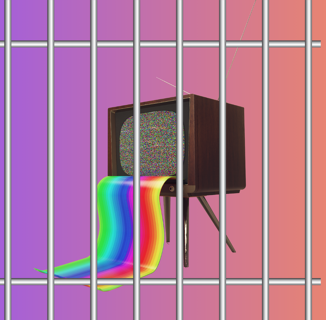The LGBTQ+ community is large and ever-changing, so it may be difficult to understand where you stand on the spectrum and that is totally okay! Sexuality is fluid and ever-changing, so the most important part is letting yourself explore and learn what you feel the most comfortable with.
In this article, we’ll tackle what it means to be demisexual and what it entails to be a part of this community.
What does being demisexual mean?
Being Demisexual refers to someone who does not experience primary sexual attraction. This means you only experience sexual attraction after forming a close-knit emotional relationship first. This sexuality explores the idea of ditching the first impression notion or being attracted solely based on physical appearance.
Demisexuality is often categorized in the asexuality spectrum, but is not to be mistaken with asexuality (link to what it means to be asexual when that is published). The common denominator between all demisexual-identifying individuals is that it takes time to get to know someone before sexual attraction is present. The amount of time however varies from person to person, for some, it might take months and for others years. There is no “right” way to be demisexual.
Learning that you might be a part of the LGBTQ+ community might be scary at first, but there are many ways to plug yourself into the community and learn to be comfortable with your sexuality.
if you’re curious about how you might identify, here’s what you should know about what being demisexual means:
History of the word demisexual
The word “demi” in demi sexual defines the word very well as it is meant to symbolize the midway point of the asexuality spectrum. Demisexuality was first coined in 2006 by a user who posted a forum on The Asexual Visibility & Education Network describing the feeling of not being quite asexual or non-sexual. He found himself right in the middle requiring an emotional connection to feel sexual attraction.
To understand the history of the word it is important to understand the difference between primary and secondary sexual attraction. Primary means instant attraction towards a person based on first-sight feedback, such as appearance and smell. On the other hand, we have secondary attraction referring to attraction based on information that isn’t available at first glance, such as personality or talent. The word demisexual was created for those who identify with only being able to feel arousal after secondary sexual attraction has been developed. It is critical to note that once secondary attraction is achieved with someone, demisexual individuals can experience desire related to the physical aspects of said partner.
Because the definition of the demisexual identity was created recently it only entered the Oxford English Dictionary in March of 2022. Since gaining recognition the word has slowly trickled into conversation with public figures such as Michaela Kennedy-Cuomo coming out as demisexual and Tinder including the “sexuality as a self-descriptor” option.
Alternatives to the word demisexual
Because identity is personal and different people are comfortable using different terms there are a variety of ways to say the word demisexual, including:
- Asexual (having some issues finding other words let me know if you know of any others!)
- Non-heterosexual
- gray-asexual
Over time language evolves and this creates new words derived from a multitude of historical nuances. Labels and terms can also carry connotations, bad or good, which is why one might identify more with one term over the other despite them meaning the same thing. It is also important to note that the word demisexual can encompass homosexual, nonbinary, and transgender individuals, and so much more.
What NOT to call demisexual people
Hateful words that refer to the demisexual community should always be erased from conversations and speech. Stereotypes and slurs are still present in conversations regarding the demisexual community so it is important to identify these words and effectively remove them from conversations.
It is also critical to note that members of the demisexual community have begun to reclaim derogatory terms to take back the oppression they have faced. Although within the community this is acceptable it is still not okay to refer to demisexual people with a derogatory term if one is not a part of the community themselves. Always ask before assuming someone’s sexuality.
What makes someone demisexual?
Demisexuality is founded on the idea that a strong emotional connection is more important than what you first notice about a person. You might be demisexual if you identify with this idea and find yourself needing a close bond in order to develop sexual attraction.
One of the main confusions that arise when talking about demisexuality is, what defines a close bond? This of course ties back to the idea that there is no right or wrong way to approach an identity. A close bond can only be defined by the person who is exploring the relationship, it takes people different amounts of time to connect with another person. Just because someone creates a quicker bond does not make them any less demisexual.
Just like there is a Kinsey scale that measures where you fall on the homosexuality spectrum, there is the asexuality spectrum. This means you might find yourself not feeling any sexual attraction to other individuals or you might find yourself in the midway point finding sexual desire upon certain conditions. Demisexuality falls in the gray or middle area, this means you can only truly be interested in someone if you get to know them and create a tight bond with them.
It’s always a great idea to trust that members of the community know more about their sexuality than you do, listen to demisexual people when they speak about their identities.
Perspectives on being demisexual
Perhaps one of the most important ways to understand demisexual individuals is understanding what harmful stereotypes might cloud what the identity is really about and working towards dismantling these ideas. For example, the idea that demisexual people completely disregard physical appearance is a false notion. Just because physical appearance might not be the priority when searching for a partner, demisexual people still have the capacity for aesthetic attraction. In the same way it is false to state that all demisexual individuals have a low sexual drive just because it takes time for them to experience sexual attraction, this is a myth.
Because the term demisexuality was coined so recently there is not a plethora of resources or visibility on the media. The fight for onscreen representation of demisexual individuals is as paramount as ever. The importance of visibility and getting to see other demisexual individuals in mainstream media is a great way to understand the perspective of this identity.
The perfect way to keep up to date with these stereotypes and combating them is keeping up to date on demisexual individuals in the media and listening to what they have to say on the topic. It is also a great way to feel connected if you are a part of the community and need the support of other demisexual people.
The demisexual flag
View this post on Instagram
It is unknown as to who created the demisexual flag, but its colors are derived from the asexual pride flag created in 2010. The colors are black representing asexuality, gray representing demisexuality, white representing sexuality, and purple representing community.
Bottom Line
Although demisexuality is a newly defined sexuality it does not mean people haven’t identified with this idea for hundreds of years. Being sexually attracted to someone only after creating an emotional bond is beautiful and normal. We are joyfully watching demisexual pride trickle into mainstream media and in trade growing the demisexual community and family.
If some of the ideas above resonate with you and you’re thinking of coming out, make sure the conditions are safe and have a plan of action regarding housing and food if things don’t go as planned.
In addition, be sure to learn about the other identities that make up the LGBTQ+ community on our website or subscribe to the INTO newsletter to learn more.
Help make sure LGBTQ+ stories are being told...
We can't rely on mainstream media to tell our stories. That's why we don't lock our articles behind a paywall. Will you support our mission with a contribution today?
Cancel anytime · Proudly LGBTQ+ owned and operated
Read More in Culture
The Latest on INTO
Subscribe to get a twice-weekly dose of queer news, updates, and insights from the INTO team.
in Your Inbox















